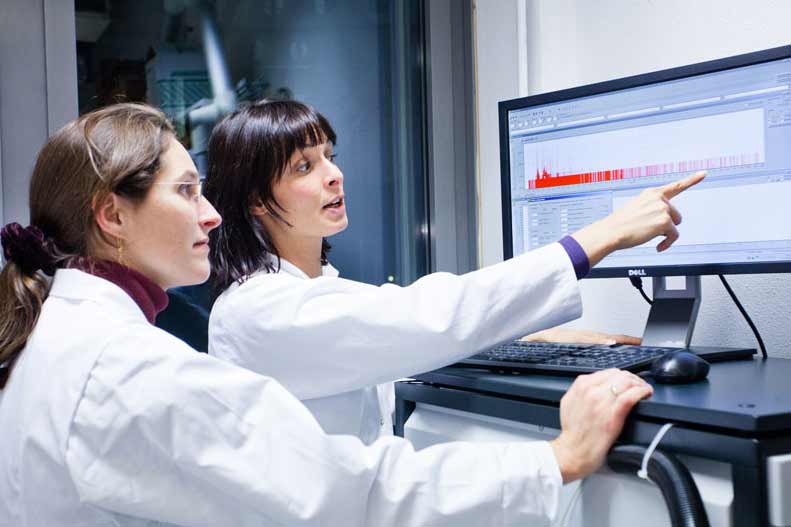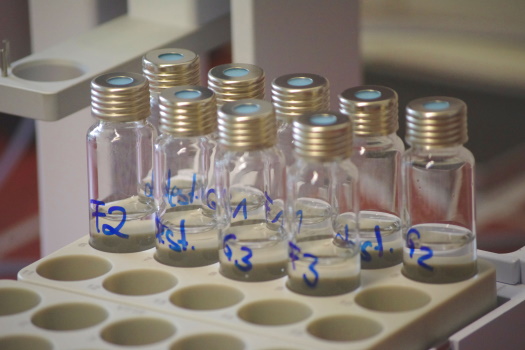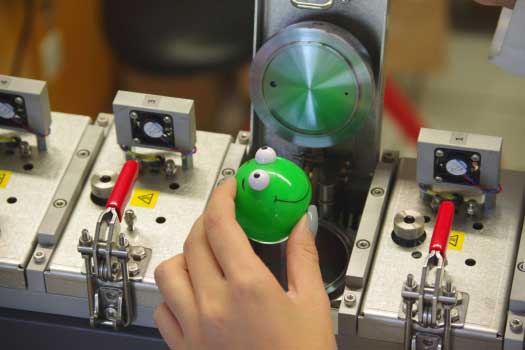
Emissions analytics

How is aroma released from foods? Which odors of products are generated through processing or arise during storage? Where does the characteristic odor of specific materials come from? The analysis of volatile organic compounds (VOCs) can aid in optimizing the sensory properties of products or in minimizing emissions that are potentially harmful to human health.
We investigate and characterize the emission of VOCs from a wide variety of products and (raw) materials. We tailor our analytical methods to the products and challenges of individual customers. We analyze the typical composition and patterns of VOCs from diverse sources such as biogenic raw materials, foods, plastics, consumer products, and waste. This provides us with important information about the presence or formation of chemical substances – both desirable and undesirable – that can aid in developing measures to prevent or promote specific substances.
Characterization, monitoring, and optimization of odorants
Our methods for the analysis of aroma-active compounds
The characterization of odorants is performed using gas chromatography-olfactometry (GC-O) coupled with mass spectrometry (MS). The use of GC-O enables clear distinction between odorous substances, including off-odors, and non-odorous substances. The analysis also enables direct comparison of different samples and identification of undesired components.
The identification of odorous trace components is performed using high performance two-dimensional GC-O/MS. Here the odorous substances are separated on two coupled GC columns and then analyzed by a mass spectrometer. The odor quality is also evaluated at an odor detection port by highly trained sensory specialists.
The resulting instrumental-chemical information is then compared with the human-sensory evaluations to ensure that all off-odors are identified.
Studying dynamic processes in real-time
The technique of proton-transfer-reaction mass spectrometry (PTR-MS) - often coupled with time-of-flight mass spectrometry (PTR-TOF-MS) - is regularly employed for the real-time analysis and quantitation of VOCs. The PTR-MS method allows small changes in the concentration of VOCs to be monitored down to ultra-trace levels. Real-time analysis is vital because important emissions processes are often transient, for example, mechanical or enzymatic processes associated with mastication. We use PTR-MS for both in vivo analyses (e.g. nosespace analysis) and in vitro analyses (e.g. headspace analysis).
Extensive analytical instrumentation
In addition to PTR-MS, ion mobility spectrometry (IMS) and other advanced two-dimensional thermal desorption (TD)GCxGC-MS systems are used for analyzing VOCs. This enables the characterization of VOCs with a high resolution. Gas samples can be collected on sorbent tubes (e.g. Tenax) using a micro-chamber/thermal extractor, with subsequent analysis by GC-MS following thermal desorption.



 Fraunhofer Institute for Process Engineering and Packaging IVV
Fraunhofer Institute for Process Engineering and Packaging IVV